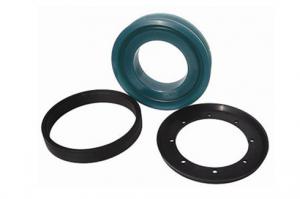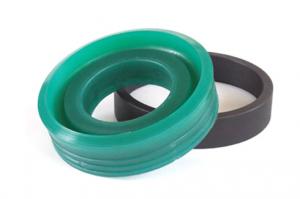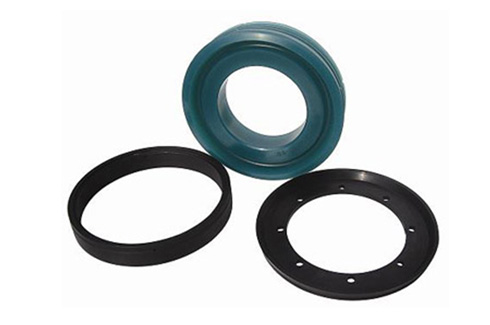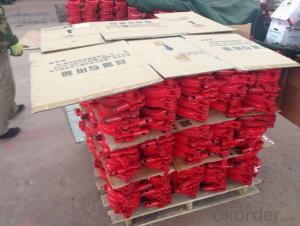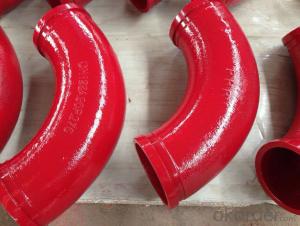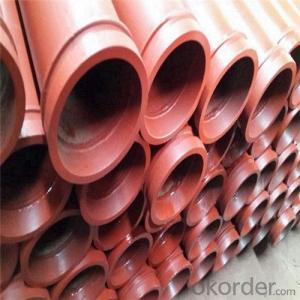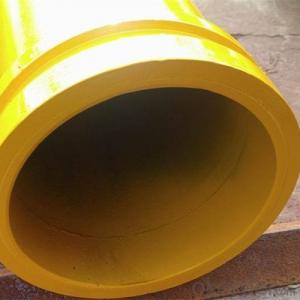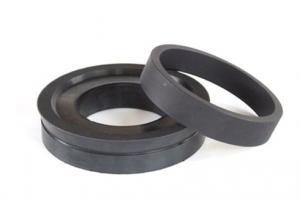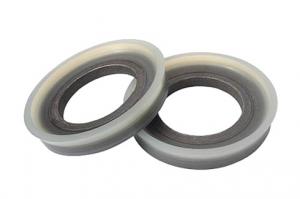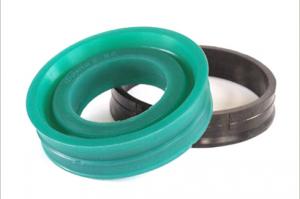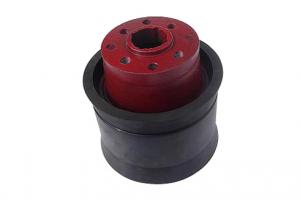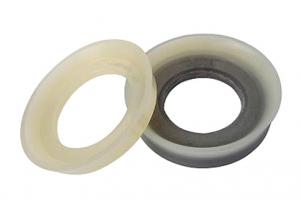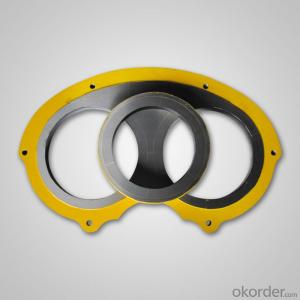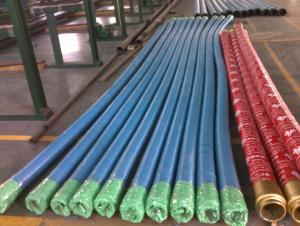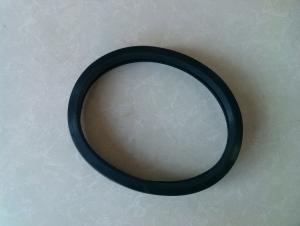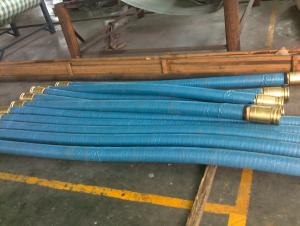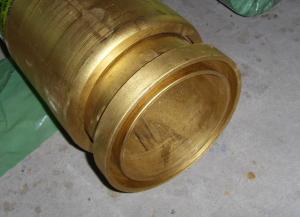Concrete Pump SANY Seal Piston DN200 & DN230
- Loading Port:
- China Main Port
- Payment Terms:
- TT OR LC
- Min Order Qty:
- -
- Supply Capability:
- -
OKorder Service Pledge
Quality Product, Order Online Tracking, Timely Delivery
OKorder Financial Service
Credit Rating, Credit Services, Credit Purchasing
You Might Also Like
Brand: Schwing, Putzmeister, Sany,Zoomlion, IHI, Kyokuto, Sermac
Other products:
1) ST52 steel pipe, elbow, reducer
2) Wear-resisting board and Cuts ink
3) Coupling and seal ring for Putzmeister,Schwing, Sany
4) Rubber hose
5) Cleaning series and others
- Q: What are the skills of concrete pump?
- The operator and equipment management personnel should carefully read the instructions, grasp the relevant knowledge of the structural principle, use and maintenance as well as pumping concrete; use and operation of the concrete pump, should be strictly in accordance with the execution of instructions
- Q: How often should the concrete pump wear plate be replaced?
- The wear plate of a concrete pump needs to be replaced based on several factors such as the type and volume of concrete being pumped and the pump's operating conditions. Generally, wear plates are designed to endure a certain level of wear and tear before replacement is necessary. It is advisable to regularly inspect the wear plate to identify any signs of excessive wear, such as visible cracks, erosion, or a significant reduction in thickness. By conducting regular visual inspections, you can determine when it is time to replace the wear plate. Furthermore, monitoring the pump's performance and efficiency can offer insights into the wear and tear on the wear plate. If you notice a noticeable decrease in the pump's output or an increase in required pumping pressure, it may indicate that the wear plate needs replacement. However, it is vital to consult the manufacturer's guidelines and recommendations for your specific concrete pump model. These guidelines often provide information on the expected lifespan of the wear plate and the recommended replacement intervals. Following these guidelines will help ensure optimal performance and longevity of your concrete pump.
- Q: How often should concrete pump remote control antennas be inspected and replaced?
- Concrete pump remote control antennas should be inspected regularly to ensure they are in good working condition. The frequency of inspections will depend on the usage and working conditions of the concrete pump. In general, it is recommended to inspect the antennas at least once a year or after every 500 hours of usage, whichever comes first. However, if the pump is used in harsh environments or experiences frequent wear and tear, more frequent inspections may be necessary. It is important to check for any signs of damage, such as cracks, corrosion, or loose connections. If any damage is detected, the antenna should be replaced immediately to prevent any disruptions in the remote control signal. Regular inspections and timely replacement of antennas will help ensure the smooth and efficient operation of the concrete pump.
- Q: How often should concrete pump hydraulic motors be inspected and replaced?
- The inspection and replacement frequency of concrete pump hydraulic motors varies depending on several factors, including usage intensity, maintenance practices, and the specific guidelines of the manufacturer. However, as a general guideline, it is advisable to inspect hydraulic motors every 6 to 12 months. During this inspection, it is important to check for signs of wear and tear, leaks, and any abnormal noises that may occur during operation. Additionally, regular maintenance tasks like lubrication and cleaning should be carried out according to the manufacturer's recommendations. Ultimately, the decision to replace hydraulic motors should be based on their overall condition and performance. If noticeable issues or a significant decrease in efficiency are observed, it may be necessary to replace the hydraulic motors before the suggested inspection interval.
- Q: What is the purpose of a concrete pump hopper grate?
- The purpose of a concrete pump hopper grate is to filter out any large debris or aggregates from the concrete mixture as it is being pumped into the hopper. It helps to ensure a smooth and consistent flow of concrete, preventing any blockages or clogs in the pump system.
- Q: How long does it take to receive concrete pump spare parts after placing an order?
- The time it takes to receive concrete pump spare parts after placing an order can vary depending on various factors such as the availability of the parts, shipping methods, and the location of the supplier. However, it typically takes anywhere from a few days to a couple of weeks for the parts to be delivered. It is always advisable to check with the supplier or manufacturer for a more accurate estimate based on your specific order.
- Q: What is the function of a concrete pump control valve?
- The purpose of a concrete pump control valve is to regulate the concrete flow from the pump to the desired location. By controlling the speed and direction of the concrete, it ensures precise placement. Furthermore, the control valve aids in preventing blockages in the pumping system by enabling the operator to adjust the pressure and flow rate of the concrete. Moreover, it contributes to the safety of the operation as the operator can stop or start the concrete flow as required. In conclusion, the concrete pump control valve is essential for the efficient and effective transfer of concrete from the pump to the desired location.
- Q: Can I use alternative materials for concrete pump spare parts?
- Yes, it is possible to use alternative materials for concrete pump spare parts. However, it is important to consider the specific requirements and performance characteristics of the parts before making any substitutions. Concrete pump spare parts are designed to withstand high pressures and abrasive materials, so using alternative materials that can withstand these conditions is crucial. It is recommended to consult with the manufacturer or a professional in the field to ensure that the alternative materials chosen will not compromise the performance or safety of the concrete pump.
- Q: How often should hopper grate handles be inspected or replaced in a concrete pump?
- Regular inspections should be conducted on hopper grate handles in a concrete pump to identify any signs of wear and tear or damage. The frequency of these inspections and the need for replacement may vary depending on the equipment's usage and condition. It is suggested that the hopper grate handles be inspected at least once a month or after every 500 hours of operation, whichever occurs first. During the inspection, it is important to verify that the handles are firmly attached to the hopper grate and to examine them for any cracks, bends, or other structural problems. If any damage is detected, it is recommended to promptly replace the handles to prevent accidents or further harm to the equipment. It is also crucial to adhere to the manufacturer's guidelines and recommendations for the maintenance and replacement of hopper grate handles. By regularly inspecting and replacing the handles as necessary, the safe and efficient operation of the concrete pump can be ensured.
- Q: What is the purpose of a concrete pump piston?
- The purpose of a concrete pump piston is to pressurize and push the concrete mixture through a pipeline, enabling efficient and accurate placement of the concrete in construction projects.
Send your message to us
Concrete Pump SANY Seal Piston DN200 & DN230
- Loading Port:
- China Main Port
- Payment Terms:
- TT OR LC
- Min Order Qty:
- -
- Supply Capability:
- -
OKorder Service Pledge
Quality Product, Order Online Tracking, Timely Delivery
OKorder Financial Service
Credit Rating, Credit Services, Credit Purchasing
Similar products
Hot products
Hot Searches
Related keywords
